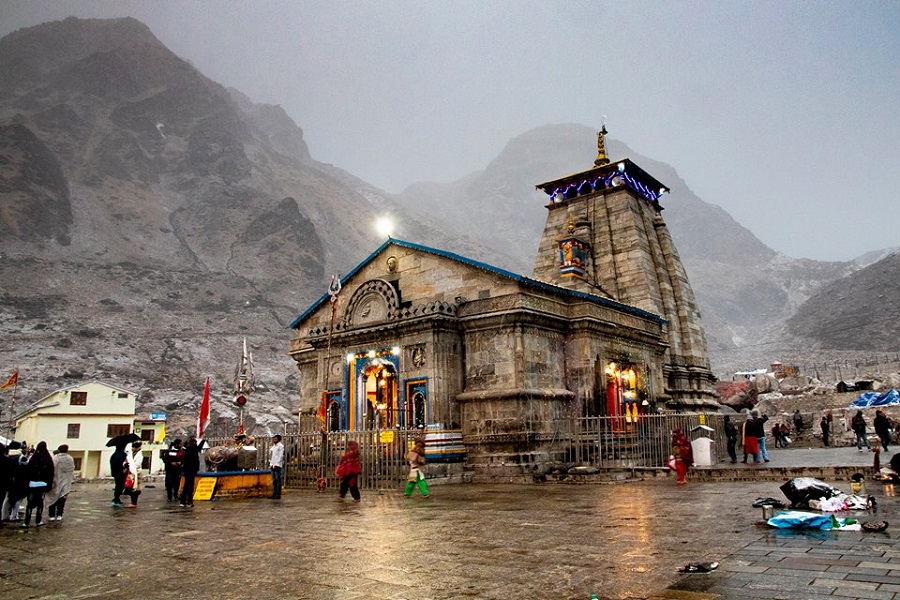The Char Dham Yatra: Unveiling Its Piousness

Sanatan Dharm main kaha jaata hai ki apne maata pita ko Char Dham Yatra karane se Pavitra aur kuchh nahi hota. Aaj hum usi Char Dham Yatra ke baare main janenge. Vo 4 Dham jahan Ishwar ka hona anubhav hota hai. It does not matter if you are a theist or an atheist, the beauty and purity of Char Dham is enough to captivate you. Duniya bhar ki bhag daud aur parehsaaniyo ka ek chhutkara hai ye yatra. Nestled amidst the majestic Himalayas, the Char Dham sites - Badrinath, Kedarnath, Gangotri, and Yamunotri - hold profound significance in Hindu mythology and culture. Let us embark on a virtual expedition to unravel the mystical allure and timeless tales of these divine abodes.
Badrinath: The Abode of Lord Vishnu
Perched at an elevation of 3,133 meters above sea level, Badrinath Temple stands as a symbol of unwavering devotion and architectural grandeur. Dedicated to Lord Vishnu, it is believed to be one of the holiest pilgrimage sites in India. Pilgrims flock here to seek blessings and witness the sacred idol of Lord Badri Narayan.

Kedarnath: Gateway to Liberation
Kedarnath is a Hindu temple, one of the twelve Jyotirlinga of Lord Shiva. The temple is located on the Garhwal Himalayan range near the Mandakini River, in the state of Uttarakhand. Dedicated to Lord Shiva, this sacred shrine is revered as one of the twelve Jyotirlingas and holds profound significance in Hindu mythology. The trek to Kedarnath is a test of endurance and faith, offering devotees a chance to immerse themselves in divine contemplation.

Gangotri: Source of Ganga River
Maa Ganga ki shuruaat Gangotri se hi hoti hai jise hum Rishikesh, Haridwar main behte hue dekhte hai. Nestled in the Garhwal Himalayas, Gangotri Temple marks the origin of the sacred River Ganges. Legend has it that Goddess Ganga descended to Earth at this hallowed site to cleanse the sins of mankind. Surrounded by pristine beauty and rugged terrain, Gangotri offers a serene retreat for seekers and nature enthusiasts alike.

Yamunotri: Sanctum of the Goddess Yamuna
Tucked away in the Uttarkashi district of Uttarakhand, Yamunotri Temple stands as a testament to the divine feminine energy of Goddess Yamuna. Pilgrims embark on a picturesque trek to reach the temple, where they bathe in the holy waters of the Yamuna River to cleanse their sins and seek blessings for prosperity and well-being.

Some Tips To Remember On The Journey Of Char Dham
• It might cost 500-800 Rupees per person for every bus journey. A shared taxi may charge 200-300 Rs extra than a bus.
• You can find a twin-sharing room for 500 or 600 Rupees at most places
• Make sure to carry at least one photo ID card with you.
• Avoid visiting Char Dham between May and June because of the peak tourist season.
Fascinating Facts about Char Dham
• The Char Dham pilgrimage is believed to cleanse the soul of all sins and pave the way for Moksha (liberation).
• Adi Shankaracharya, the renowned Hindu philosopher, is credited with establishing the Char Dham circuit during the 8th century.
• Each Char Dham site is associated with one of the four cardinal directions, symbolizing spiritual completeness and cosmic harmony.
• The Char Dham Yatra typically spans from April to November, coinciding with favorable weather conditions for pilgrimage.
